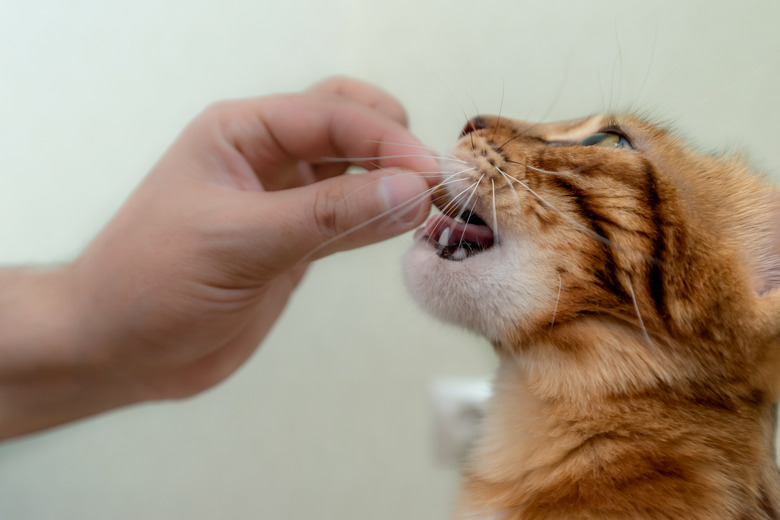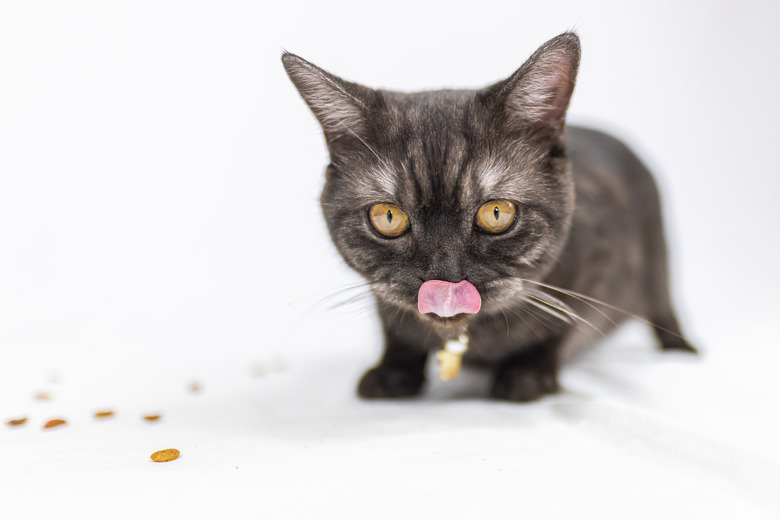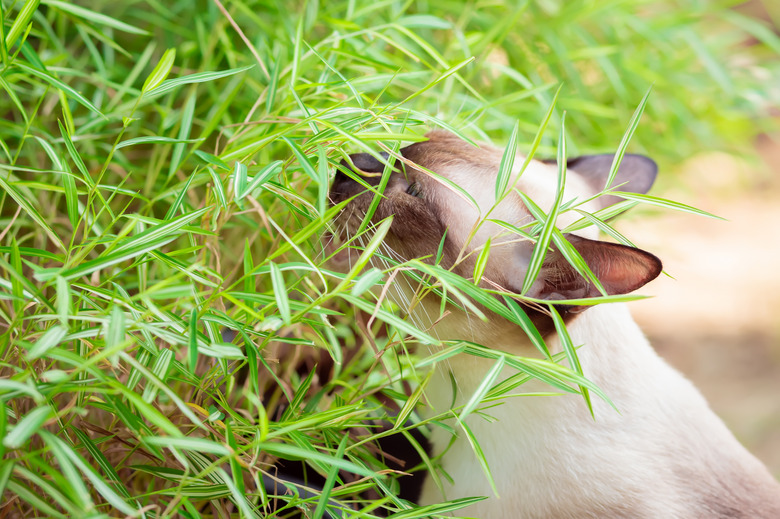Can You Give Cat Treats To Kittens?
Kittenhood is a curious and playful time marked with new beginnings and rapid growth, physically, mentally, and emotionally. Just in the first several weeks of a cat's life you'll see changes in size, mental clarity and focus, and feeding styles. Kittens transition to solid food relatively quickly compared to people, and are usually on a mostly solid cat food diet by two months of age. If you're looking to offer your kitten an extra snack from time to time, cat treats are fine when access is limited and the consistency is something their developing teeth can handle.
Kitten development and eating
Kitten development and eating
Kittens nurse on their mothers for about the first eight weeks of life, and for the first four weeks in that life stage, a feline relies entirely on their mom's milk to meet all of their nutritional needs. The Humane Society states that around week four is when a kitten's teeth begin to appear, and with them, changes to their feeding routine. Weaning, the process of acclimating to food sources other than their mother's milk, usually occurs between weeks four and six. During this time, kittens are often introduced to solid foods, like wet food or dry kitten food, in addition to milk.
The nursing process continues until around week eight, at which point most kittens are getting nearly all of their nutrients from dry food. Some cat guardians opt to offer their kittens treats. This decision is up to the individual, but in most cases, it's safe to offer a bite here and there.
Feeding kittens treats
Feeding kittens treats
According to the ASPCA, it is fine to feed a kitten cat treats, with a few stipulations. First, make sure that the treats your kitten enjoys makes up only a small part of their diet, ideally no more than about 5%. Treats should be offered... well, as a treat, and not as a meal replacement, so you'll want to limit your kitten's treat intake to between-meal snacks. Kitten guardians should also keep a kitten's teeth, and the development of them, in mind when choosing a suitable snack. Treats formulated for adult cats that are soft or chewy in consistency, or kitten-specific treats will be the best options for kittens during this stage of growth.
Additionally, treats can make for excellent playthings for kittens, who may be naturally inclined to bat it around or pounce on it before chowing it down. This type of play is natural for cats, and is an important part of healthy feline development.
Commercial treat alternatives
Commercial treat alternatives
In addition to, or as an alternative for, commercial kitten or adult cats treats, young felines may enjoy cooked meat as a snack. Cats are obligate carnivores, which means they need to eat meat in order to survive. Because cats require high levels of protein, offering protein-rich bits of cooked chicken or tuna are easy and inexpensive ways to help your feline meet her nutritional needs. Of course, commercial cat food is formulated to offer a balanced diet for cats, so these snacks are often not needed, especially if your feline lives indoors fulltime or is more on the inactive side.
In addition to meat, cats also enjoy fiber from objects like grass, which can aid in keeping their digestive system healthy. If grass isn't available and your cat enjoys it, you can offer small bits of cooked vegetables like broccoli, green beans, carrots and squash as a treat or snack.
In conclusion
In conclusion
Kittens can enjoy treats intended for an adult cat as a small snack in between meals. Treats that are softer or more chewy in consistency may be more comfortable for a kitten to eat, and many kitten-specific cat treats are designed this way. Additionally, small bits of cooked meat or vegetables can also be enjoyed by kittens who have or are transitioning to a diet of solid food.
Always check with your veterinarian before changing your pet's diet, medication, or physical activity routines. This information is not a substitute for a vet's opinion.


